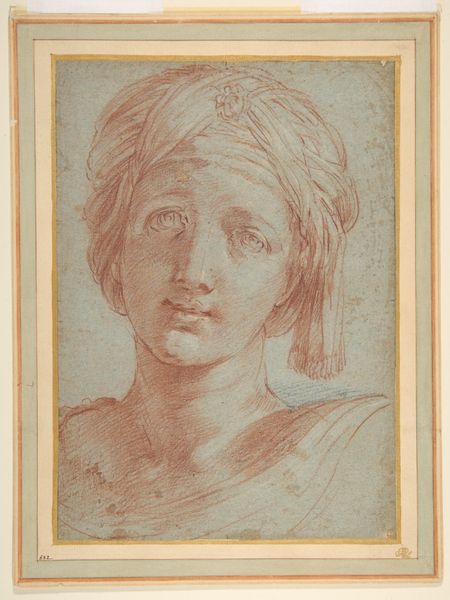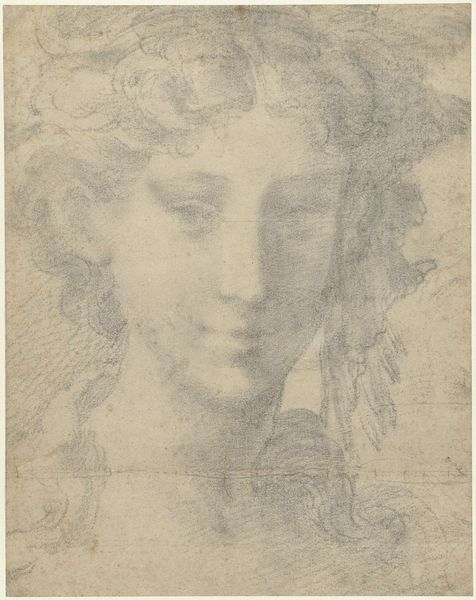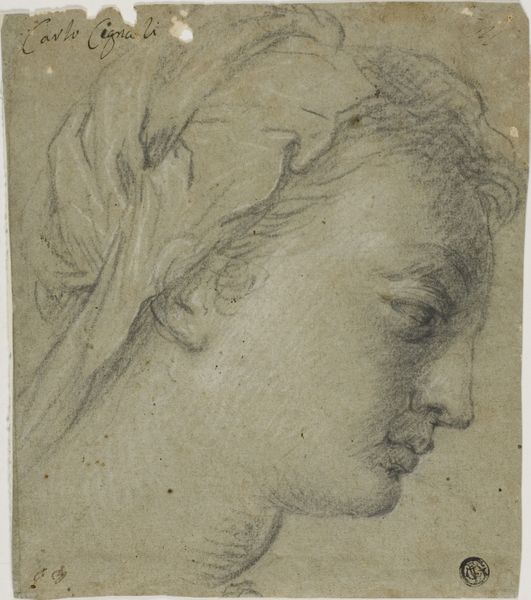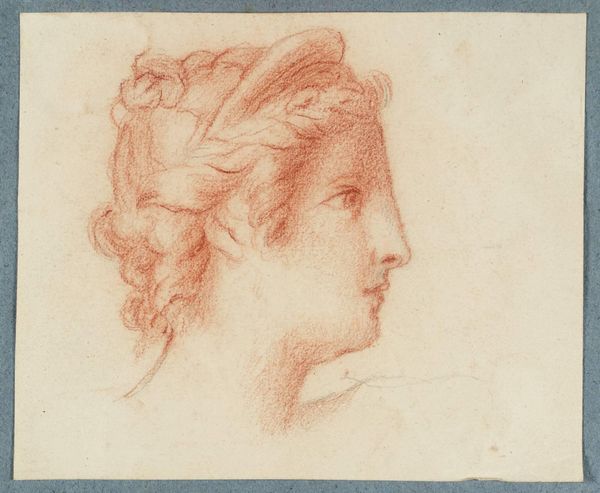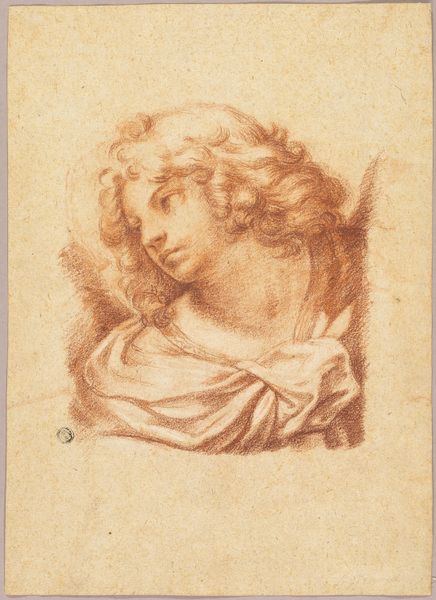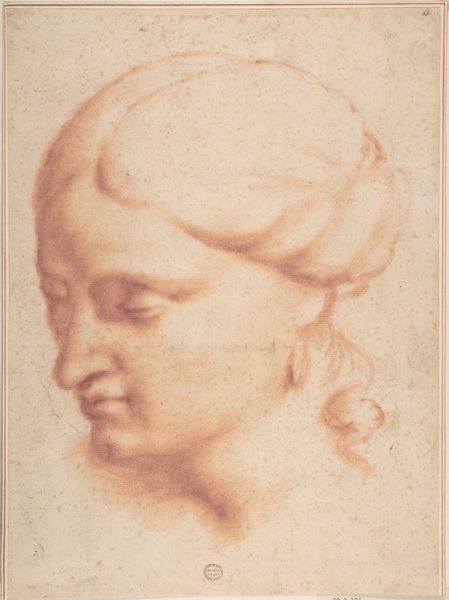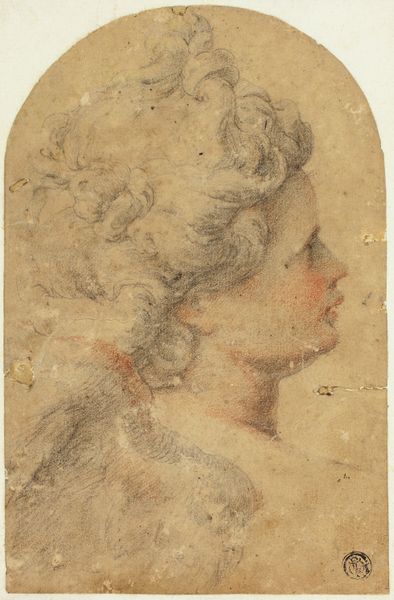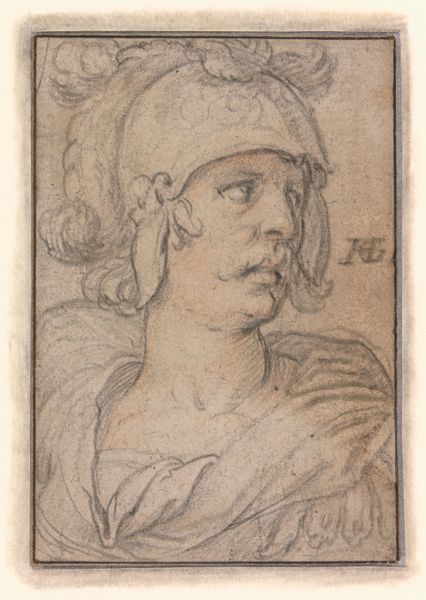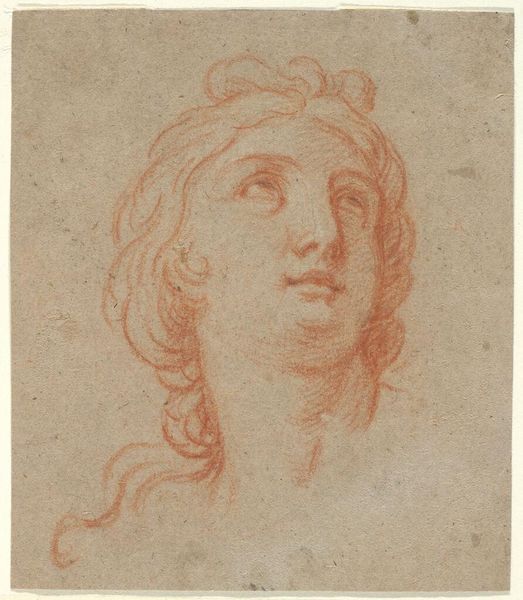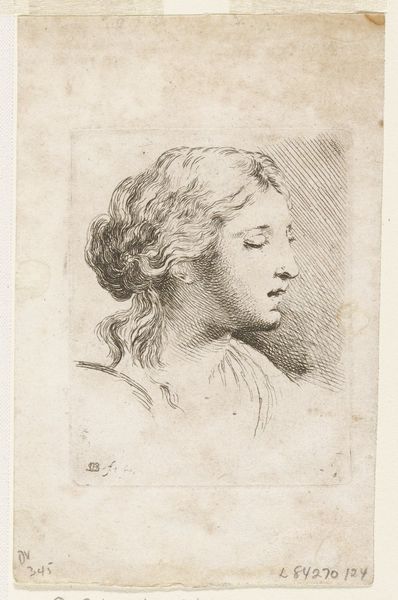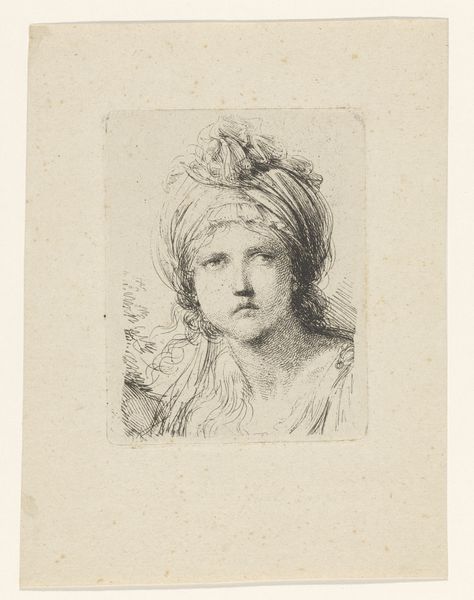
drawing, print, paper, pencil, chalk, charcoal, black-chalk
#
portrait
#
drawing
#
self-portrait
# print
#
classical-realism
#
charcoal drawing
#
paper
#
charcoal art
#
oil painting
#
pencil drawing
#
pencil
#
chalk
#
charcoal
#
academic-art
#
black-chalk
#
watercolor
Dimensions: 283 × 245 mm
Copyright: Public Domain
Editor: Here we have "Head of a Woman," a drawing attributed to Antonio Balestra. It’s undated, rendered in black chalk, charcoal and pencil on paper. What immediately strikes me is the figure's calm and almost ethereal expression. How do you interpret this work? Curator: It's interesting you pick up on the ethereal quality. Consider how often idealized female forms appear throughout art history. The "head" becomes a symbolic vessel, carrying echoes of classical beauty ideals, representations of virtue, or even stand-ins for abstract concepts like "wisdom" or "grace." Does the softness of the chalk lend itself to that effect, do you think? Editor: I think it does. The soft lines create a sense of gentleness, less defined than a stark outline. Do you think the drawing imitates paintings of ancient goddess that may no longer be around today? Curator: Precisely. These images tap into a reservoir of collective memory. They allow us to commune with previous visions and aesthetics. There's a psychological weight to seeing these familiar symbols recreated, isn’t there? We see our values reflected or challenged. Editor: That’s really insightful. So, even a seemingly simple drawing like this one holds layers of cultural and symbolic meaning. Curator: Exactly. By engaging with it, we're not just observing; we are participating in an ongoing visual conversation that spans centuries. The "Head of a Woman" becomes an entry point into the broader human narrative. Editor: I’ll definitely look at portraits differently now. Curator: And that, ultimately, is the power of art, to expand how we see and understand the world around us.
Comments
No comments
Be the first to comment and join the conversation on the ultimate creative platform.
